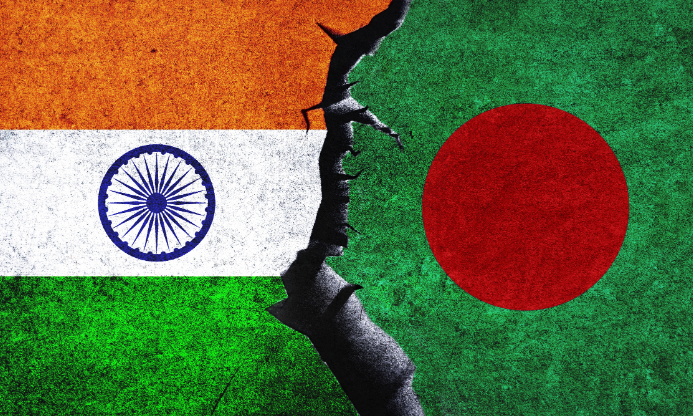
The dismemberment of East Pakistan on December 16, 1971, was not merely an internal crisis but also the culmination of India’s calculated efforts to exploit Pakistan’s vulnerabilities. While internal factors such as political alienation and economic disparities played a role, India’s intervention through military and strategic means significantly influenced the outcome. By critically examining India’s involvement, this article seeks to challenge the dominant narrative and reveal the geopolitical ambitions that underpinned the creation of Bangladesh.
India’s Covert Role in the Crisis
India’s involvement in East Pakistan began long before its official military intervention in December 1971. The Mukti Bahini insurgency, comprising Bengali militants, was armed, trained, and sheltered by Indian forces. Declassified documents reveal how Indian intelligence agencies, particularly RAW, orchestrated the insurgency to destabilize Pakistan. American diplomat Archer Blood’s cables highlight how Indian territory served as a base for Mukti Bahini operations, escalating the conflict. India’s portrayal of itself as a humanitarian savior masks its strategic motives. Indira Gandhi’s government used the plight of Bengali refugees to garner international sympathy while systematically undermining Pakistan’s sovereignty. The refugee crisis, though significant, was exaggerated in global media to justify India’s aggressive posture. This manipulation of humanitarian concerns underscores India’s realpolitik approach to the crisis.
The Propaganda Machine
India’s success in isolating Pakistan diplomatically was largely due to its effective use of propaganda. Indian media outlets, supported by the government, painted Pakistan as a brutal oppressor, overshadowing the atrocities committed by Mukti Bahini insurgents. Reports of mass killings and rapes by Pakistani forces were often exaggerated, with figures such as three million deaths widely cited despite lacking credible evidence. Scholars like Sarmila Bose have debunked these claims, estimating the death toll to be significantly lower. The plight of the Bihari community, loyal to Pakistan, remains one of the most overlooked aspects of the conflict. Over 500,000 Biharis were massacred by Mukti Bahini forces, a tragedy largely ignored by the international community. This selective outrage highlights the bias in global narratives surrounding the 1971 crisis.
Geopolitical Ambitions
India’s intervention in East Pakistan was driven by strategic considerations rather than altruistic motives. The creation of Bangladesh not only weakened Pakistan but also bolstered India’s regional dominance. By dismembering Pakistan, India sought to eliminate the two-front threat posed by East and West Pakistan. This strategy aligns with India’s broader ambition to assert itself as the dominant power in South Asia. The role of the Soviet Union in supporting India’s ambitions further complicates the narrative. The Indo-Soviet Treaty of Peace, Friendship, and Cooperation, signed in August 1971, provided India with the diplomatic backing and military hardware needed for its intervention. This alliance highlights the Cold War dynamics that influenced the conflict, with Pakistan caught in the crossfire of superpower rivalries.
Acknowledging Pakistan’s Challenges
While India’s role was pivotal, Pakistan’s internal challenges cannot be ignored. The failure to address Bengali grievances and the mishandling of the political crisis following the 1970 elections created fertile ground for separatist sentiments. However, it is essential to recognize that these issues could have been resolved through dialogue and reforms had external interference been absent. The sacrifices of Pakistani soldiers during the conflict deserve recognition. Despite facing overwhelming odds, they fought valiantly to defend national unity. The vilification of the Pakistani Army in global narratives often overlooks the complexities of the conflict and the provocations it faced from Mukti Bahini insurgents.
Lessons for the Future
The fall of Dhaka underscores the importance of addressing internal divisions and fostering national cohesion. Pakistan must learn from its past to ensure that regional disparities and political grievances are addressed proactively. Strengthening democratic institutions and promoting inclusivity are critical steps toward national unity. On the external front, Pakistan must counter hostile propaganda and strengthen its diplomatic outreach. Building alliances based on mutual respect and shared interests is essential to safeguarding national sovereignty. The 1971 tragedy serves as a stark reminder of the consequences of internal disunity and external manipulation. As Pakistan reflects on the fall of Dhaka, it must strive to move forward with resilience and determination. Understanding the multifaceted causes of the conflict is not only crucial for reconciliation but also for building a stronger and more united nation. By revisiting this chapter with a balanced perspective, Pakistan can honor the sacrifices of its people and chart a path toward a more inclusive and cohesive future.

